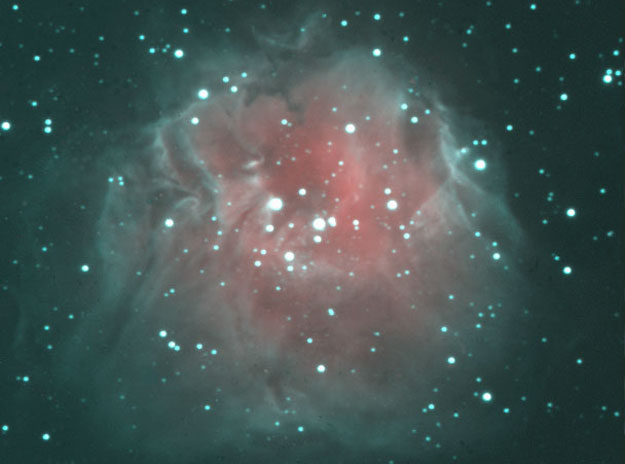Explanation: Where do the most massive stars form? Observational evidence indicates that the outskirts of developing open clusters of stars are primary locations. Pictured above is one such open cluster: Sharpless 212. Visible in the image center are massive stars in the open cluster. The energetic light from these stars ionizes surrounding hydrogen atoms creating an HII region. As the hydrogen atoms re-acquire electrons, they emit the red light highlighted. Sharpless 212 also contains small amounts of dust and heavy atoms such as Sulfur. The dust efficiently absorbs light, while emission from Sulfur is highlighted in blue. Particularly striking and well-defined boundaries that separate the ionized material from surrounding neutral material are visible at the edge of the HII region. Sharpless 212 spans about 20 light years and lies about 25,000 light years away.
1999 2000 2001 2002 2003 2004 2005 2006 2007 2008 2009 2010 2011 2012 2013 2014 2015 2016 2017 2018 2019 2020 2021 2022 2023 2024 2025 |
Yanvar' Fevral' Mart Aprel' Mai Iyun' Iyul' Avgust Sentyabr' Oktyabr' Noyabr' Dekabr' |
NASA Web Site Statements, Warnings, and Disclaimers
NASA Official: Jay Norris. Specific rights apply.
A service of: LHEA at NASA / GSFC
& Michigan Tech. U.
|
Publikacii s klyuchevymi slovami:
Rasseyannoe skoplenie - ionizaciya - HII region - ionization region
Publikacii so slovami: Rasseyannoe skoplenie - ionizaciya - HII region - ionization region | |
Sm. takzhe:
Vse publikacii na tu zhe temu >> | |
